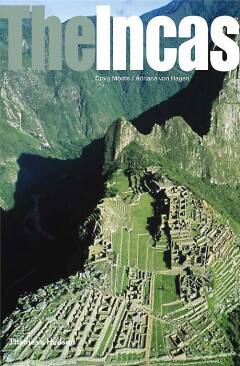
- Afhalen na 1 uur in een winkel met voorraad
- Gratis thuislevering in België vanaf € 30
- Ruim aanbod met 7 miljoen producten
- Afhalen na 1 uur in een winkel met voorraad
- Gratis thuislevering in België vanaf € 30
- Ruim aanbod met 7 miljoen producten
Zoeken
The Incas: Lords of the Four Quarters (Pb)
(Ancient Peoples and Places)
Craig Morris, Adriana von Hagen
€ 20,95
+ 41 punten
Omschrijving
The Incas built one of the largest empires of the ancient world. The sheer scale makes their achievement truly remarkable. At its zenith it extended northwards from the Inca capital Cusco along the Andes to embrace parts of modern Peru and Ecuador, and southwards into Bolivia, Chile and Argentina. Uniquely, the authors look in detail at Cusco and at the four parts of the empire, following the vast road system to explore not just famous sites such as Machu Picchu, but all the major regional settlements. This vivid portrait shows how the Incas ruled some peoples directly but allowed others to maintain their traditional leaders with little interference. The concluding chapter is devoted to the end of the empire: the arrival of the Spaniards, the assassination of the Inca ruler Atawallpa, and the final years of the rebellious, neo-Inca state in the tropical forest of Vilcabamba.
Specificaties
Betrokkenen
- Auteur(s):
- Uitgeverij:
Inhoud
- Aantal bladzijden:
- 256
- Taal:
- Engels
- Reeks:
Eigenschappen
- Productcode (EAN):
- 9780500289440
- Verschijningsdatum:
- 30/07/2017
- Uitvoering:
- Paperback
- Afmetingen:
- 163 mm x 241 mm
- Gewicht:
- 700 g

Alleen bij Standaard Boekhandel
+ 41 punten op je klantenkaart van Standaard Boekhandel
Beoordelingen
We publiceren alleen reviews die voldoen aan de voorwaarden voor reviews. Bekijk onze voorwaarden voor reviews.











